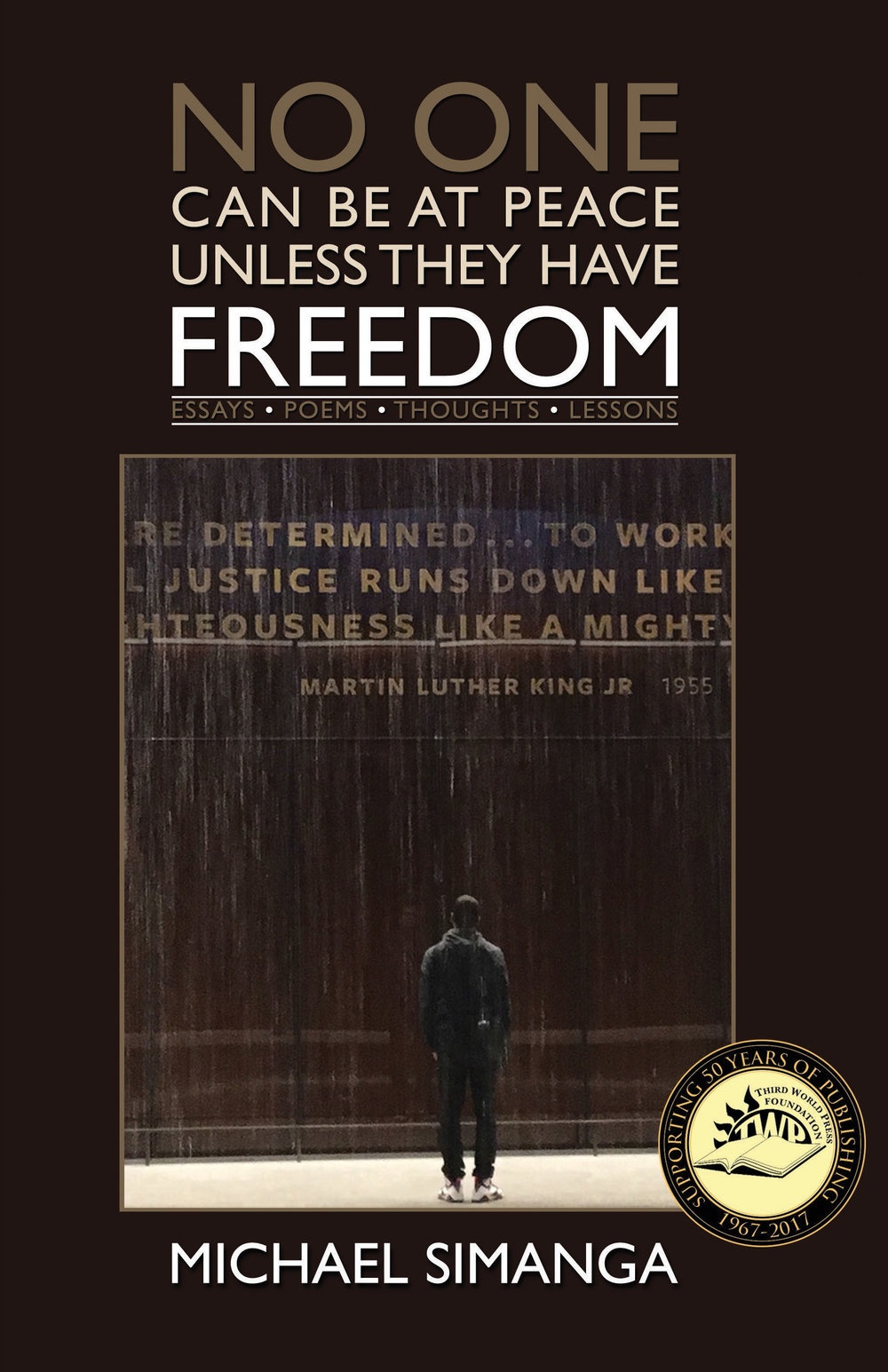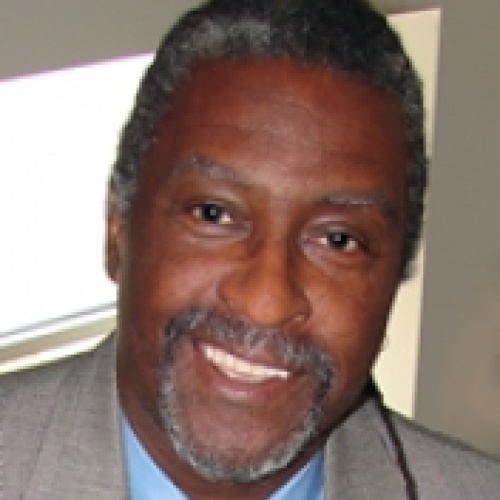BOOK REVIEW: 'No One Can Be at Peace Unless They Have Freedom'

[Editor's note: The following is a review of "No One Can Be at Peace Unless They Have Freedom," a collection of essays, poems and other works by Michael Simanga published by the Third World Press Foundation. Simanga is a lecturer in African-American studies at Georgia State University in Atlanta and the author or co-editor of previous titles on subjects including the Congress of African People, Amiri Baraka, and Barack Obama.]
Just in time for Black History Month, longtime Atlanta cultural worker and political activist Michael Simanga has provided us with a modest but rich volume to accompany our learning and reflections.
We were surprised by this piece, expecting a very different book. Paying little attention to pre-release descriptions, we anticipated his decades of experience crafting poetry, press releases, polemics, fiction and academic articles would result in a tome on the Black experience in the U.S. that would be exciting, deep and inspiring. Upon receipt we were surprised about the length but not disappointed by the contents.
The book's publisher, Haki Madhubuti, describes this work as being "carefully and strategically wrapped throughout in well-thought-out essays, poems, personal thoughts and lessons for the reader looking for more … a critical document that demands that readers think, rethink, and continue to re-assess where we are as Black individuals, families, communities, organizations, institutions, businesses, scholars, and of course, artists."
Simanga has crafted a magnificent collection of short essays and poetry framed by a longer article that is both historical and timely, "African Americans, Racist Counter Revolution and Trump." In a shorter introductory piece he warns, "no one is coming for us. There is no historical evidence that any group or government, locally or nationally, will voluntarily intervene forcefully enough to stop the contemporary version of the violent suppression of Black life." While this may sound reminiscent of recent observations by Ta-Nehisi Coates, the difference is that Simanga speaks as someone who has been in the trenches for decades and offers ways to move forward based on experience and a vision.
Through three short pieces we learn about Simanga's family heritage of struggle. His mother, Mama Imani Humphrey, was an educator and a prominent figure in the independent African-centered school movement in Detroit. His father, Richard Humphrey Jr., was a community organizer who exposed him to the breadth of culture in the community and the various political actors of the time. One does not get the sense of claims to movement royalty but rather an example of how families create conscious and active participants in the quest for freedom and justice from generation to generation.
"No One Can Be at Peace" is not a Southern story in terms of place although Simanga's family roots are in the South, much like those of the late mayor of Jackson, Mississippi, Chokwe Lumumba. Both came of age in the cauldron of Black culture and politics in Detroit in the 1960s and through engagement in the struggle for Black liberation found themselves spending the better part of their adult lives in the South. The Black experience in the United States is as much a Southern story as it is a post-Great Migration tale. All of this is represented in these pages with prescriptions for participating in the necessary resistance to the current state of affairs.
The reflections range from Martin Luther King and Malcolm X to Muhammad Ali, Standing Rock to Black Lives Matter, and a third section covering an extraordinary range of cultural workers including Duke Ellington, Cassandra Wilson, Amiri Baraka and Maya Angelou. There is a brief tribute to the late Haitian Catholic priest, the Rev. Gerard Jean-Juste, but I felt like Simanga did not share enough of his vast experience and views on the African diaspora. Interested readers will find them elsewhere.
Even in this digital age book lovers are still impressed by cover art. This cover will be familiar to those who have visited the much-heralded National Museum of African American History and Culture. But it's not a stock photo or even from a contracted shoot. The image is of the author's son Malik as he stands in front of this new monument to Black suffering and resilience. Once proudly posted on Michael Simanga's Facebook page, it now invites us to review an assessment of the long struggle for Black freedom in the United States.
If other activities of Black History Month or the day-to-day demands of family and work make it hard to tackle "No One Can Be at Peace" in its entirety, readers may want to use it as a daily reflection or meditation tool. There is enough material for an essay and a poem a day to get you through February. Whether as a meditation or a quick read, absorb it and share the lessons and the ideas.
Tags
Ajamu Dillahunt
Ajamu Dillahunt is a Southern labor and social justice activist. He is a retired postal union leader and continues to work as a popular educator. His many organizational affiliations include the Black Workers for Justice, the Labor Network for Sustainability and the board of Fertile Ground Food Cooperative.
